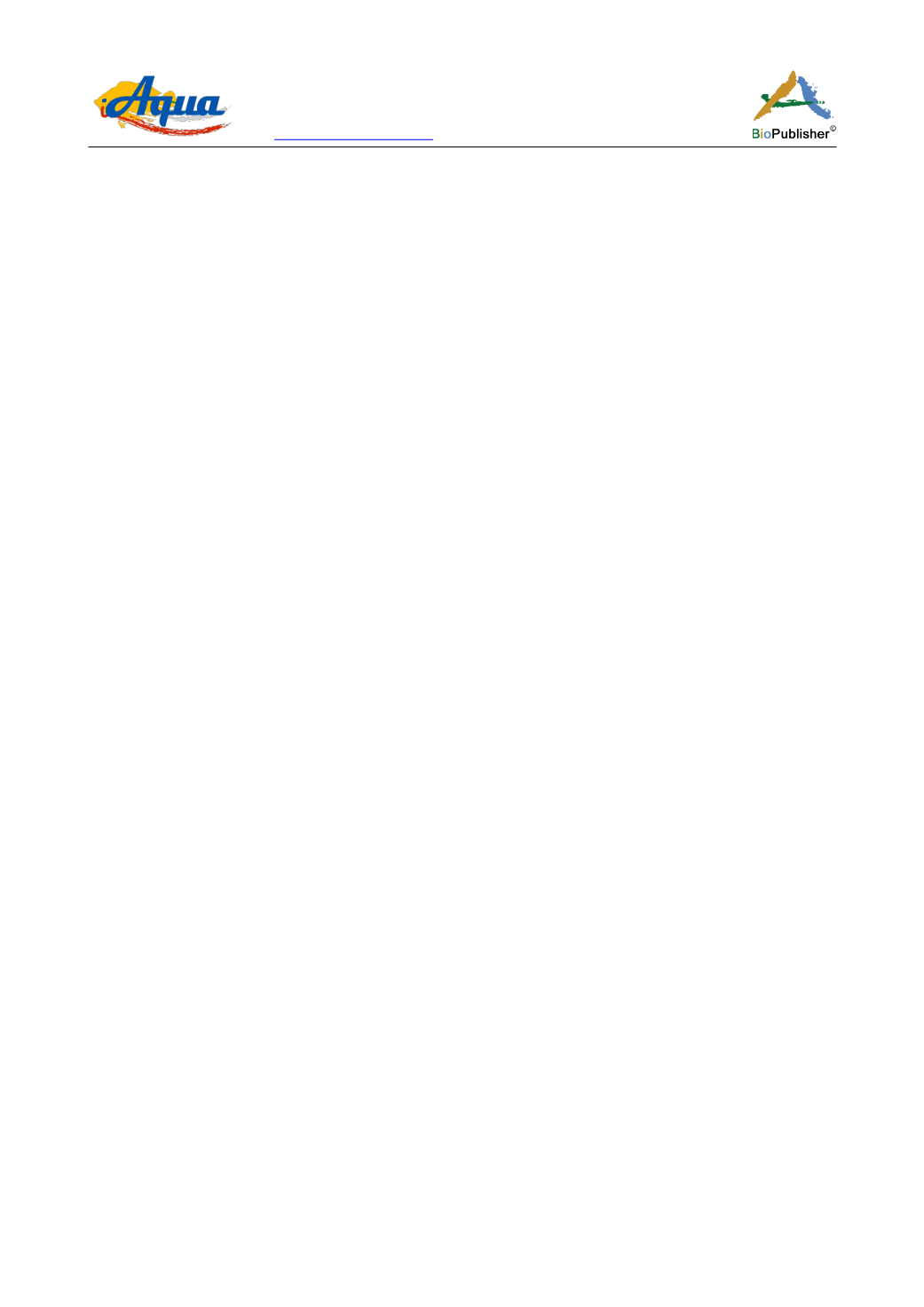
International Journal of Aquaculture, 2016, Vol.6, No.10, 1
-
9
5
2 Discussions
Plant-based proteins such as soybean meal, and microalgae has been considered as an alternative replacement for
fish meal in the commercial aquaculture feed (Appler, 1985, Gomes et al., 1995 ; Kaushik et al., 1995). However,
several studies indicate that the use of plant-based diets generally display lower food digestibility than
animal-based diets. And this is
caused mainly by the presence of cellulose (Boyd and Goodyear, 1971), which is
main membrane structure surrounding cell wall of soybean meal and of the aquatic plant (Baldan et al., 2001 ;
Mihranyan, 2011). In addition,
cellulose content in the plant-based aquaculture feed has been frequently
associated with several adverse effects on digestive processes, including : increasing in viscosity of intestinal juice,
reducing an access of digestive enzyme to other feed materials (Bromley and Adkins, 1984), and lowering food
intake which results in slowing the growth of cultured animals (Francis et al., 2001). One way to break down
cellulose content in the plant-based diets is by the use of cellulose-degrading bacteria. Therefore, this study was
performed in the effort to find novel strains of intestinal bacteria with the capacity of degrading cellulose.
The result showed that there were 7 endosymbiont bacteria exhibiting capacity to degrade cellulose. To the
author’ knowledge, this is the first study to report cellulose - degrading bacteria from hybrid abalone. The number
of cellulose-degrading bacteria detected in the animal gut might not represent the correct pictures of
cellulose-degrading bacteria, regarding the isolation method used in this study (Ellis et al., 2003). More advanced
techniques such as polymerase chain reaction - denaturating gradient gel electrophoresis (Muyzer and Smalla,
1998) or other culture - independent metagenomic approaches (Nakamura et al., 2016) might give more precise
number of cellulose-degrading species. However, as the main concern of this study is not only detecting the
presence of cellulolytic bacteria, but also investigating their potential capacity as aquaculture probionts, the use of
cultured-dependent technique is considered legitimate.
Of these 7 cellulose - degrading bacteria, two baceterial isolates exhibiting the highest 2 cellulolytic activity
(
Stenotrophomonas
sp and
Bacillus
sp) were further investigated for their probiotic properties including:
adaptability to seawater and simulated gastrointestinal tract of aquatic species, as well as safety of these bacteria
to cultured animals which in fact are among the most critical factors for selecting probiotic candidates
(Verschuere et al., 2000; Merrifield et al., 2010; Geraylou et al., 2014). The results showed that both bacterial
strains are resistance to high salinity (32 ppt) in seawater, low pH (4.5) which is much lower compared to pH of
abalone stomach (5.45) (Harris et al., 1998) and bile salt (0.3%) in the intestine. This result could be initial
indicators for the capacity of these cellulose-degrading bacteria to colonize intestinal tract, acknowledging some
bacterial sensitivity to low pH in stomach and bile salt in intestine (Giannella et al., 1972; Borriello et al., 1985).
In fact,
Bacillus
sp seemed able to grow in the seawater and simulated stomach juice. Regarding the capacity to
tolerate bile salt, these bacteria might produce an enzyme which break down bile salt called bile salt hydrolase
(Du Toit et al., 1998) or due to the production of protective coating of exopolysaccharide (Roberts and Powell,
2005). These results may suggest that both bacteria are capable to tolerate and grow in intestinal tract of aquatic
species and contribute to food digestions. In addition, as safety for the animal host is another primary requisite of
any probiotic bacterium (Verschuere et al., 2000), both bacterial strains had been confirmed to be harmless to the
juvenile of hybrid abalone. During 14 - day feeding trials, there were no disease signs or mortalities observed
from the juvenile abalone. These results may suggest that these cellulose-degrading bacteria are potential
candidate for aquaculture probionts.
The supplementation of cellulose - degrading bacteria into cultured animals can be considered as an alternative to
enhance digestibility processes of culture animals. For instance in larval stages, many aquatic species which rely
mostly on cellulose-rich diets such as microalgae (Reitan et al., 1997) have been reported to have poor
digestibility in microalgae (Skrede et al., 2011). The poor digestibility has been associated with the thick and rigid
algal cell wall (Becker, 2007; Marshall et al., 2010). As the cell wall is also composed by cellulose, these types of
bacteria may be used to help breaking down the algal - cell walls (Mihranyan, 2011). In addition, the inclusion of


